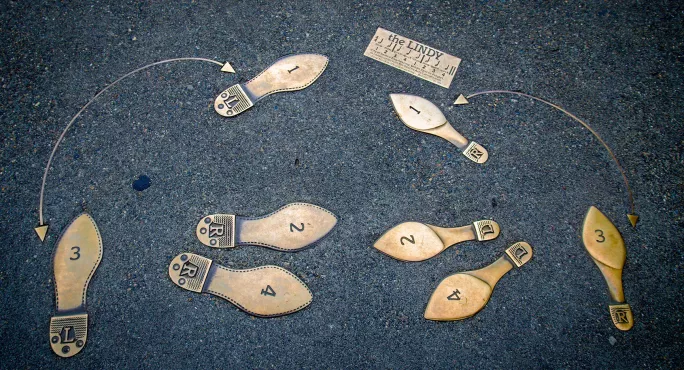
- Home
- Teaching & Learning
- General
- 6 ways expressive arts can help improve numeracy
6 ways expressive arts can help improve numeracy

A new guide showing “innovative and creative ways” to connect the teaching of numeracy and the expressive arts turned out to be wildly popular when it was published earlier this month.
The first tweet alone from Neil Millar, a senior officer at Education Scotland, has been viewed nearly 90,000 times and attracted dozens of positive comments.
Now, the advice will be discussed in an Education Scotland numeracy and expressive arts webinar tomorrow (Thursday 23 March) from 4-5pm. It is still possible to sign up by emailing esevents@educationscotland.gov.scot.
Here are six ideas from the guidance, which is aimed at all teachers working with pupils in the broad general education (to the end of S3) and covers myriad art forms, including drawing, theatre, storytelling and Scottish country dancing.
1. Stories and maths in the early level of education (age 3 to Primary 1)
Mathematical language could be linked to time and sequences in stories or fairytales. For example: ”First, the three little pigs built their houses, after that the wolf came along. He knocked on the door of the second little pig’s house…”
This could be extended to include links to time sequences: ”In the morning, the little pigs went to get their building materials. After they had picked up their supplies, they started to build their houses. At 1 o’clock they spotted the wolf prowling around outside…”
- Context: The ‘unintended consequences’ of Scottish curricular reform
- Expert view: Why now is a crucial time for the creative arts in schools
- Covid: Why arts subjects were hit so hard in the pandemic
- Music: Free music tuition continues in Scotland, but demand not met
- Quick read: Young artist goes viral after ‘thanking’ SQA for C mark
2. Design and dimensions in first level (P2-4)
Pupils could be asked to design a frame for a piece of artwork, with specifications around length and height and an emphasis on selecting and using measuring instruments accurately.
3. Dance and mathematical patterns in first level (P2-4)
While exploring and creating dance formations, pupils could keep track of the sequence of the movements and rhythm of the music by counting to the beats. Opportunities also exist in showing how mathematical vocabulary explains directions, turns and repeated patterns in set dances. For example, in the Canadian Barn Dance: “Standing in pairs around the room, each pair should be facing anti-clockwise; walk forward for three steps and hop; walk backwards for three steps and hop; move sideways, four steps away from your partner and clap” (and so on).
4. Drawing, scale and perspective in second level (P5-7)
Pupils can be encouraged to use their knowledge of the size of familiar objects to make accurate representations of shapes and objects. For example, in drawing a street scene they will apply an understanding of perspective to add depth and realism. They could also use digital technology to create images and be asked to draw objects to scale.
5. Design briefs and budgeting in third and fourth level (S1-3)
Students could be asked to design a new board game at a cost of less than £5 a unit. This encourages them to consider different types of materials and justify their choices.
6. The maths of a theatrical production in third and fourth level (S1-3)
A production timetable would require the planning of key deadlines for rehearsals and performances. Students could be asked to budget for costumes, staging and props, comparing costs across different retailers and suppliers; they might also compare costs of lighting, staging and sound hire. If the performance is going to be ticketed, students could assess how to maximise profits. A set design would require students to measure the size of the stage accurately and recreate this as a scaled drawing.
Education Scotland’s Ollie Bray, strategic director of curriculum innovation, design and pedagogy, said: “The concept of teaching numeracy through expressive arts is something that is not always obviously linked together in Scotland and we hope that teachers see this as both refreshing and progressive.
“The examples given in this new document aim to support and encourage teachers to extend their practice to teach the experiences and outcomes in numeracy and mathematics, as well as expressive arts, in an innovative and creative way.”
Mr Bray added: “For example, in early learning and childcare (ELC) settings, learners partaking in dance could be encouraged to count the steps in simple, repeated sequences, keeping in time to the beat. Or for first-level learners, mathematical vocabulary related to shape, colour, symmetry and pattern could be used when planning or describing clothing designs.
“This numeracy-related method also helps to build confidence with teachers when delivering expressive arts throughout the broad general education.”
You need a Tes subscription to read this article
Subscribe now to read this article and get other subscriber-only content:
- Unlimited access to all Tes magazine content
- Exclusive subscriber-only stories
- Award-winning email newsletters
- Unlimited access to all Tes magazine content
- Exclusive subscriber-only stories
- Award-winning email newsletters
You need a subscription to read this article
Subscribe now to read this article and get other subscriber-only content, including:
- Unlimited access to all Tes magazine content
- Exclusive subscriber-only stories
- Award-winning email newsletters
- Unlimited access to all Tes magazine content
- Exclusive subscriber-only stories
- Award-winning email newsletters



